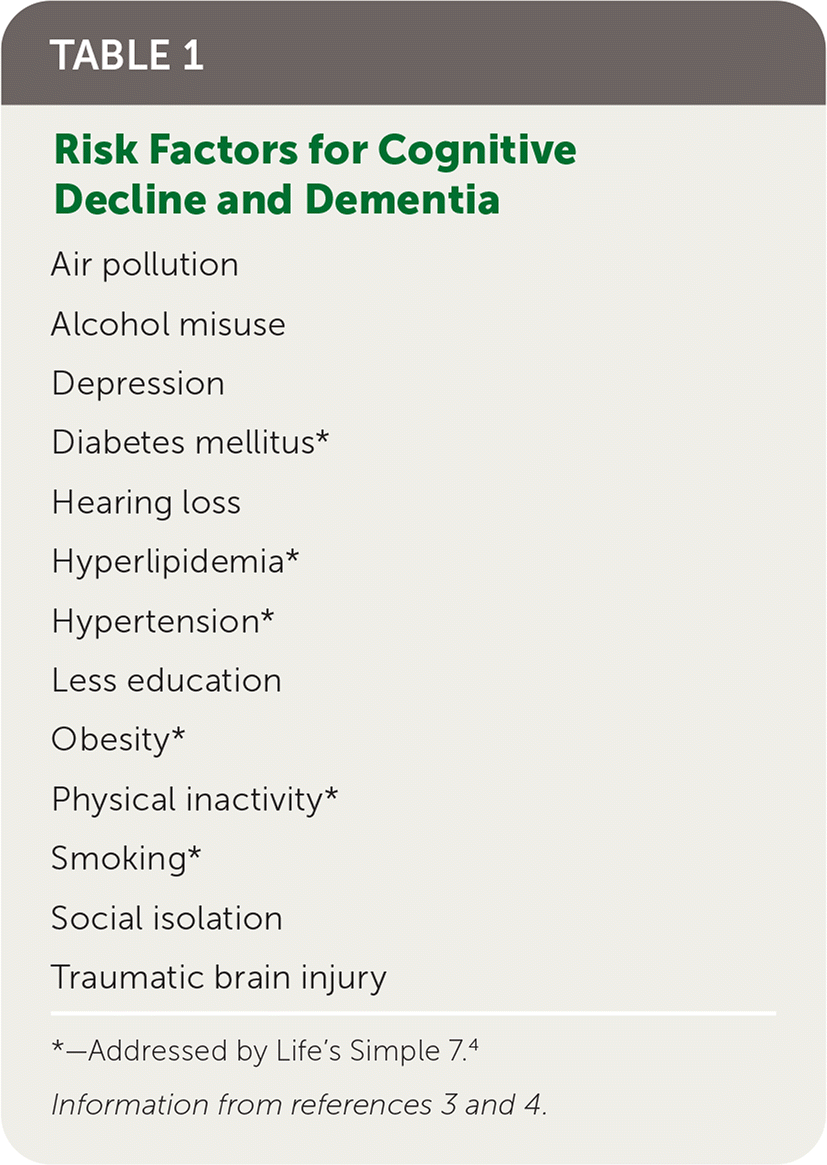
Am Fam Physician. 2022;105(1):13-14
Author disclosure: No relevant financial relationships.
The U.S. Food and Drug Administration's recent approval of aducanumab (Aduhelm) for the treatment of Alzheimer disease has generated a great deal of controversy given its uncertain benefit and significant cost. Aducanumab is a monthly intravenous infusion with a price tag of $56,000 per year, plus the cost of any associated monitoring (e.g., brain imaging) and physician fees. The drug, which targets amyloid plaques, has not been shown to improve patient-oriented outcomes. Although amyloid plaques are associated with Alzheimer disease, they are not necessarily causative. In fact, previous studies of drugs targeting amyloid deposits have shown no clinical benefit.1
Because of the lack of effective treatments, prevention remains the best strategy for reducing the burden of dementia. Secondary prevention equates to screening for dementia and offering interventions to patients who have positive findings on screening and confirmatory testing. The U.S. Preventive Services Task Force notes that the current evidence is insufficient to assess the risk/benefit ratio of screening for cognitive decline.2 Rather than attempting to identify and intervene on early disease through screening, a primary prevention strategy seeks to prevent cognitive decline by addressing modifiable risk factors. Proving that certain risk-modifying interventions are effective for reducing the risk of dementia is challenging, but epidemiologic evidence suggests that when combined, the risk factors shown in Table 1 are responsible for 40% of dementia cases worldwide.3,4

The American Heart Association (AHA) recently released a scientific statement on a primary care agenda for brain health.4 It offers guidance on a comprehensive strategy to minimize the aging brain's vulnerability to disease and therefore mitigate cognitive decline and dementia.4 Cognitive decline is not solely due to Alzheimer disease and related dementias. Prevention must address other neurodegenerative and cerebrovascular risk factors as well as comorbidities that can affect physical and cognitive function.
The AHA has identified a set of preventive interventions known as Life's Simple 7. These interventions include controlling blood pressure, avoiding smoking, getting adequate physical activity, preventing and controlling diabetes mellitus, eating a healthy diet, maintaining weight, and controlling lipid levels.4 These interventions, which are already integrated into primary care, are a large component of the current best evidence-based strategy for helping people reduce their risk of cognitive decline. Unfortunately, few people meet the goals of Life's Simple 7. Among U.S. adults 40 to 59 years of age, about 11% meet five of the seven preventive interventions, 2.2% meet six, and virtually none meet all seven.5
In addition to the risk factors addressed by Life's Simple 7, consistent observational evidence suggests the importance of education (especially early in life), social engagement, and sleep quality in mitigating cognitive decline.3,5,6 Age-related hearing loss may also contribute to cognitive decline and dementia. No randomized controlled trial (RCT) has shown that hearing interventions are effective for long-term cognitive outcomes, but observational studies suggest benefit.3,4 Although light to moderate alcohol consumption may be protective against cognitive decline, excessive alcohol intake is neurologically harmful.4 Depression appears to be a risk factor for dementia, but dementia is also a risk factor for depression.3,4 It is not clear whether treatment of depression reduces the risk of dementia.
Although there is widespread interest in pharmacologic interventions targeted at preventing cognitive decline, there is no consistent evidence of benefit for any such products. Supplements such as Ginkgo biloba and others containing vitamin B6, vitamin E, folic acid, and omega-3 fatty acids have been advertised to the public as beneficial to cognitive health. However, RCTs of these interventions have not shown any benefit for memory.7 Trials examining estrogen's effect on memory demonstrated slight worsening.6 Cholinesterase inhibitors (e.g., donepezil [Aricept]) and N-methyl-d-aspartate receptor antagonists (e.g., memantine [Namenda]), which are commonly prescribed to patients with cognitive decline, fail to demonstrate consistent improvement in memory.7 The primary care community should educate patients and family members to combat pharmacologic and nonpharmacologic pseudomedicine marketed under the guise of improving brain health.8
A few RCTs have examined the effectiveness of various types of mental exercises or training to prevent cognitive decline among healthy older adults.6,7 The effectiveness of these interventions was measured by performance on cognitive tests and instrumental activities of daily living, and evidence suggests that cognitive training and mentally stimulating activities can delay age-related cognitive decline. However, there is currently no evidence that shows such interventions prevent Alzheimer disease or related dementias.
Currently, 20% of U.S. adults 65 years and older have mild cognitive impairment, and one out of seven has dementia.4 With the aging of the population, more adults are at risk of cognitive decline, and it is estimated that the number of people with dementia will triple by 2050.4 Addressing the gaps between what has been achieved and what would be considered ideal control of risk factors offers substantial hope for reducing this number. The call to prevention could not be more urgent.
Editor's Note: Dr. Viera is coauthor of A Primary Care Agenda for Brain Health: a Scientific Statement From the American Heart Association.4
